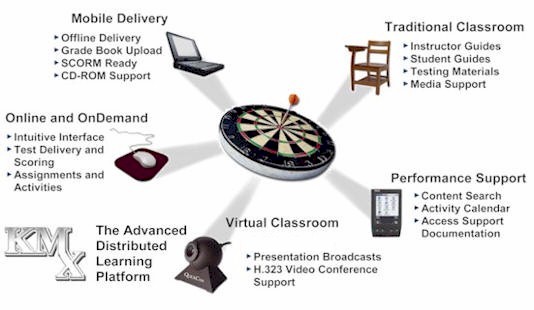
分散式學習是一種教學模式,讓教師,學生和內容位於不同,非集中的位置,以便指導和學習可以獨立發生的時間和地點。分佈式學習模型可以與傳統的基於課堂的課程和傳統的遠程教育課程結合使用 全球對分佈式學習,遠程教育,開放式學習,電子學習,混合學習和其他相關術語之間的區別和定義存在許多混淆。在特定的地理區域中,許多術語更常用。
由於COVID-19.新冠肺炎疫病始終無法徹底解決,導致於許多各級學校,重新注重分散式學習的教學方式,這樣一來沉寂已久的散式學習的教學理論與個案研討會,紛紛重啟爐灶,讓傳統性的大學與科技性質的大學,有所新的教學體驗,對於學生而言,也就是說增加了許多學習選擇的方式,由於電腦網路科技發達與普及,在所有的分散式學習領域中,是被看好的前瞻性的發展.
Individual distributed learning is typical of the modern adult learner who is very self-directed, motivated to learn and relatively knowledgeable about how to identify what they want to learn, define how they are going to learn it just go learn. This does not mean that they necessarily learn alone. It is "distributed" learning because the self-directed learner will find individuals with similar interests to connect and learn with as well as mentors and subject-matter experts to tap into. In an organizational context, there is a need for L&D departments to pay more attention to this distributed learning and Performance Adjacent Learning (just learned this term, had to use it) and focus less on formal, individual hierarchical learning which happens in the context of traditional training programs taught by Subject Matter Experts.
Collective distributed learning is found in the context of Communities of Practice where there is a common goal and a sense of community. Learning is not just in the service of the individual but rather in the service of the community as a whole. This type of learning is also very important within organizations to help address issues related to organizational memory and knowledge sharing in the context of Knowledge Management and Organizational Learning initiatives.
This article is about the instructional model known as distributed learning. For learning that is spaced only over time, see spacing effect.
Distributed learning is an instructional model that allows instructor, students, and content to be located in different, noncentralized locations so that instruction and learning can occur independent of time and place. The distributed learning model can be used in combination with traditional classroom-based courses and traditional distance education courses (in which it is also deferred to as blended learning, or it can be used to create entirely virtual classrooms
There is much confusion globally over distinctions between and definitions of distributed learning, distance education, open learning, e-learning, blended learning and other related terms. Many terms are used more commonly in particular geographies. Distinctions can arise when the chosen model focuses on either or both time and geographic distances. Distributed learning may be dependent on time if it includes synchronous sessions and further time dependent if the course is paced. The oldest and most commonly used of these terms, distance education, can be used to describe distributed learning as defined above. Distributed education lacks a correspondence school tone and history and thus is perceived as making more use of communications and especially synchronous communications technologies. Further research using both terms distance and distributed education returns better results with consider overlap.
Distributed learning is a viable option for many individuals of all ages who desire to get an education. It holds a number of advantages and a traditional learning environment.

 1樓. MilesHarold2022/10/14 02:04What exactly is meant by distributed learning in the first place? Also, can I apply this to someone in order for them to do my assignment? Or is that a bit of a stretch?(damonkorbin@hotmail.com)
1樓. MilesHarold2022/10/14 02:04What exactly is meant by distributed learning in the first place? Also, can I apply this to someone in order for them to do my assignment? Or is that a bit of a stretch?(damonkorbin@hotmail.com)














